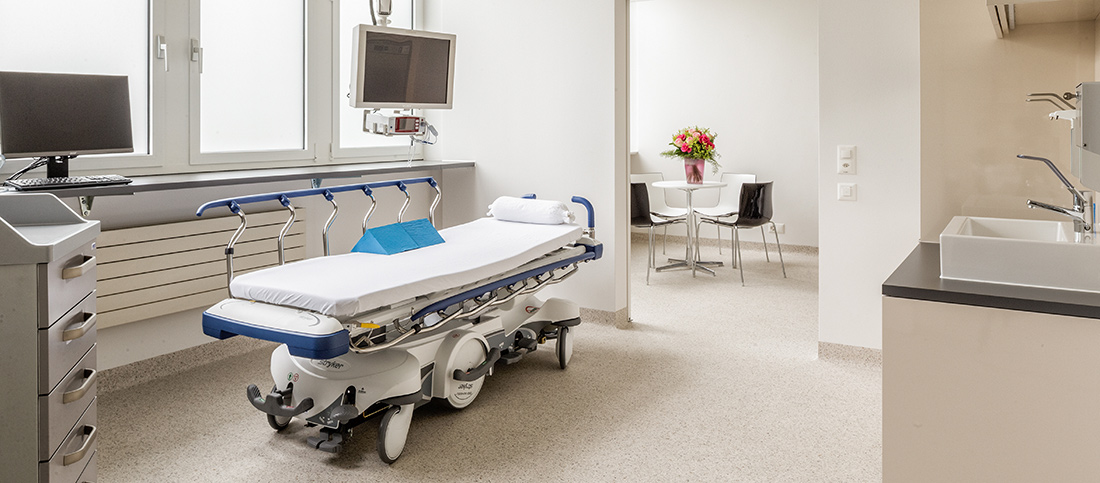Colonoscopy
A colonoscopy is the examination of the rectum and the large intestine (colon) with a colonoscope. It enables a physician to investigate problems of the lower digestive tract such as bleeding from the intestine, chronic diarrhoea, changes in stool habits, constipation, or long-lasting abdominal pain.
Colonoscopies are also used for preventive health examinations. They help find and, if possible, remove colon polyps (tissue neoplasms, which are possible precursors of colon cancer) with an electric snare or biopsy forceps. All tissue samples get sent for further examination to a pathological institute specialising in diseases of the digestive tract.
What Happens During a Colonoscopy?
The colonoscopy is performed by our physicians with state-of-the-art instruments and processors from the leading manufacturer of endoscopes.
1 day before the examination, patients must prepare for the colonoscopy by cleaning out their colons with a laxative solution. A clean colon can be examined and treated more easily and thoroughly. You will find the instructions for optimal colon cleansing here: Colonoscopy Preparation Before 13:00.pdf and Colonoscopy Preparation After 13:00.pdf
Patients are sedated with a short-acting sedative (Propofol, Disoprivan). Their pulse and oxygen saturation are monitored closely. The sedative is administered through a venous cannula in the forearm.
Due to the sedative, and for legal reasons, patients are not permitted to drive vehicles (including bicycles) on the day of the examination. Patients should also refrain from operating heavy machinery and engaging in potentially hazardous activities.
Once the patient is sedated, the thin and flexible endoscope is inserted through the anus and pushed through to the end of the small intestine. Then, the physician slowly withdraws the endoscope and closely examines the mucous membrane of the large intestine, takes tissue samples, and removes polyps.
Patients that are taking aspirin or Marcoumar can still have normal tissue samples taken and get small polyps removed. However, for the removal of larger polyps, patients are not allowed to take blood thinners for several days before the procedure. Please consult your family doctor or us if you are using blood thinners.
The sedative wears off quickly after the examination. The doctor will then explain the results of the examination to the patient.
The entire procedure (including the preliminary talk, recovery from the sedation, and debriefing) takes about 2 hours.

